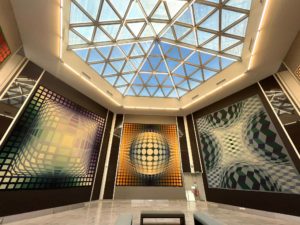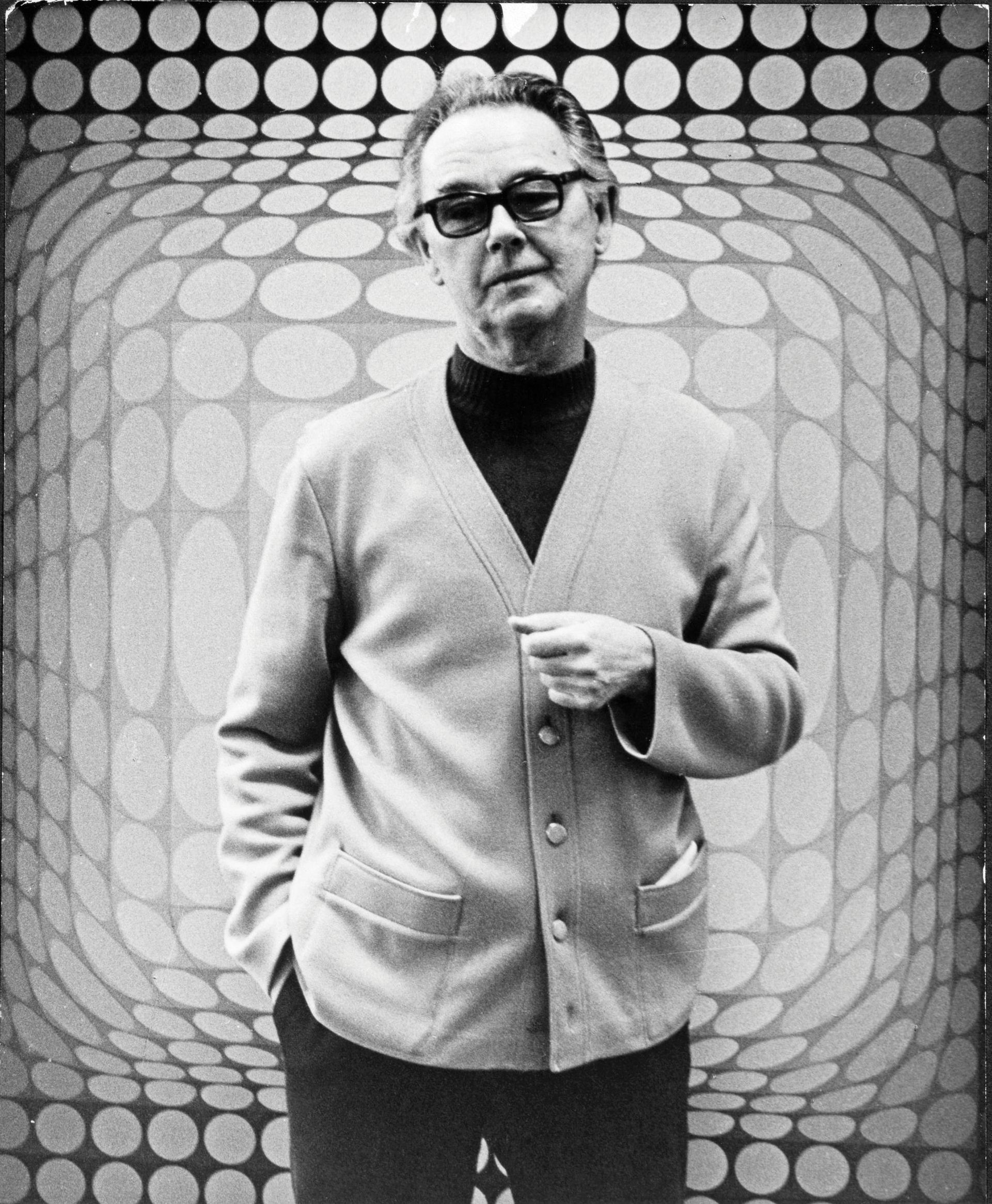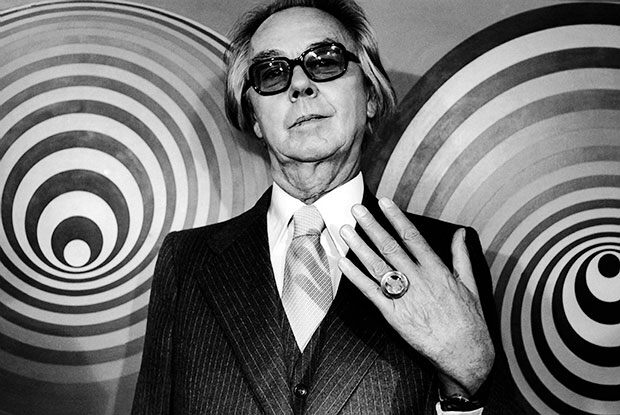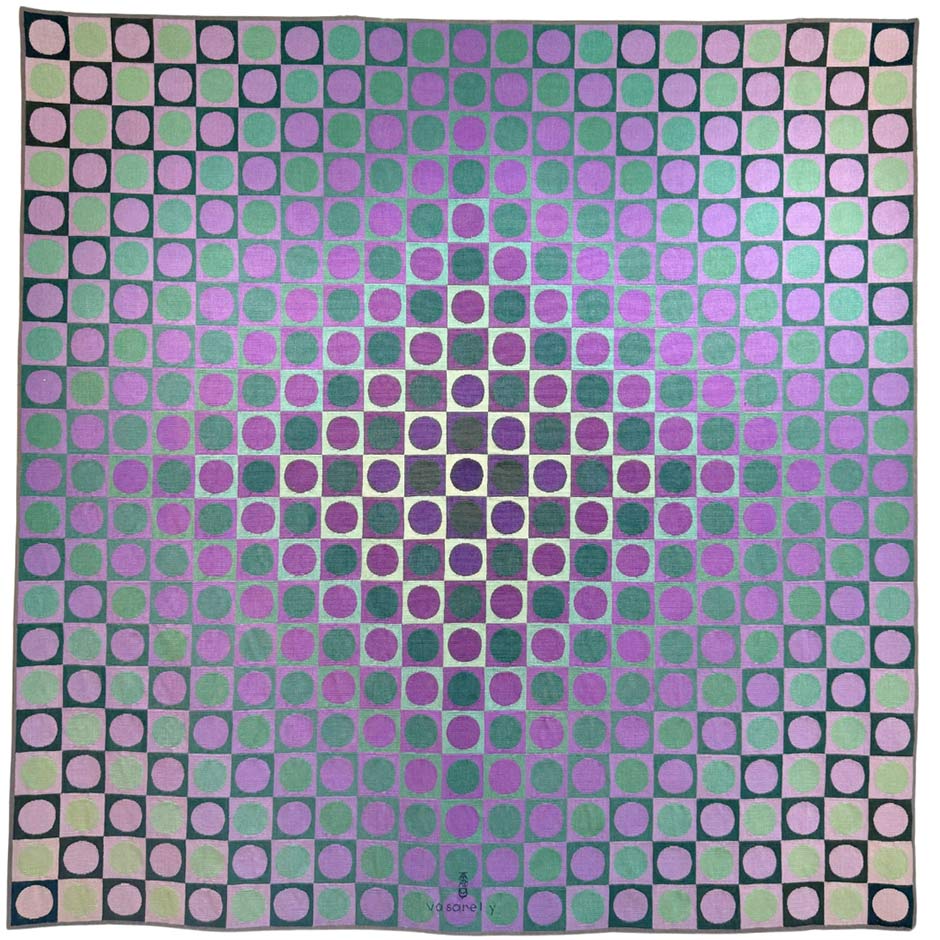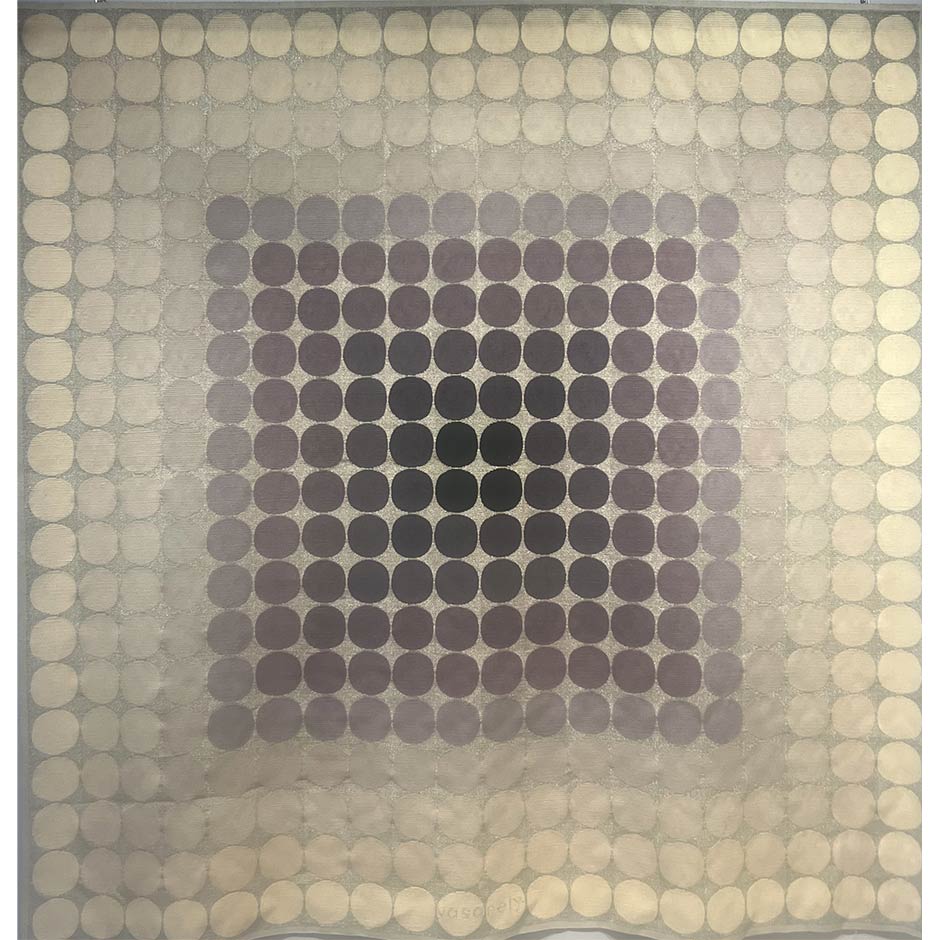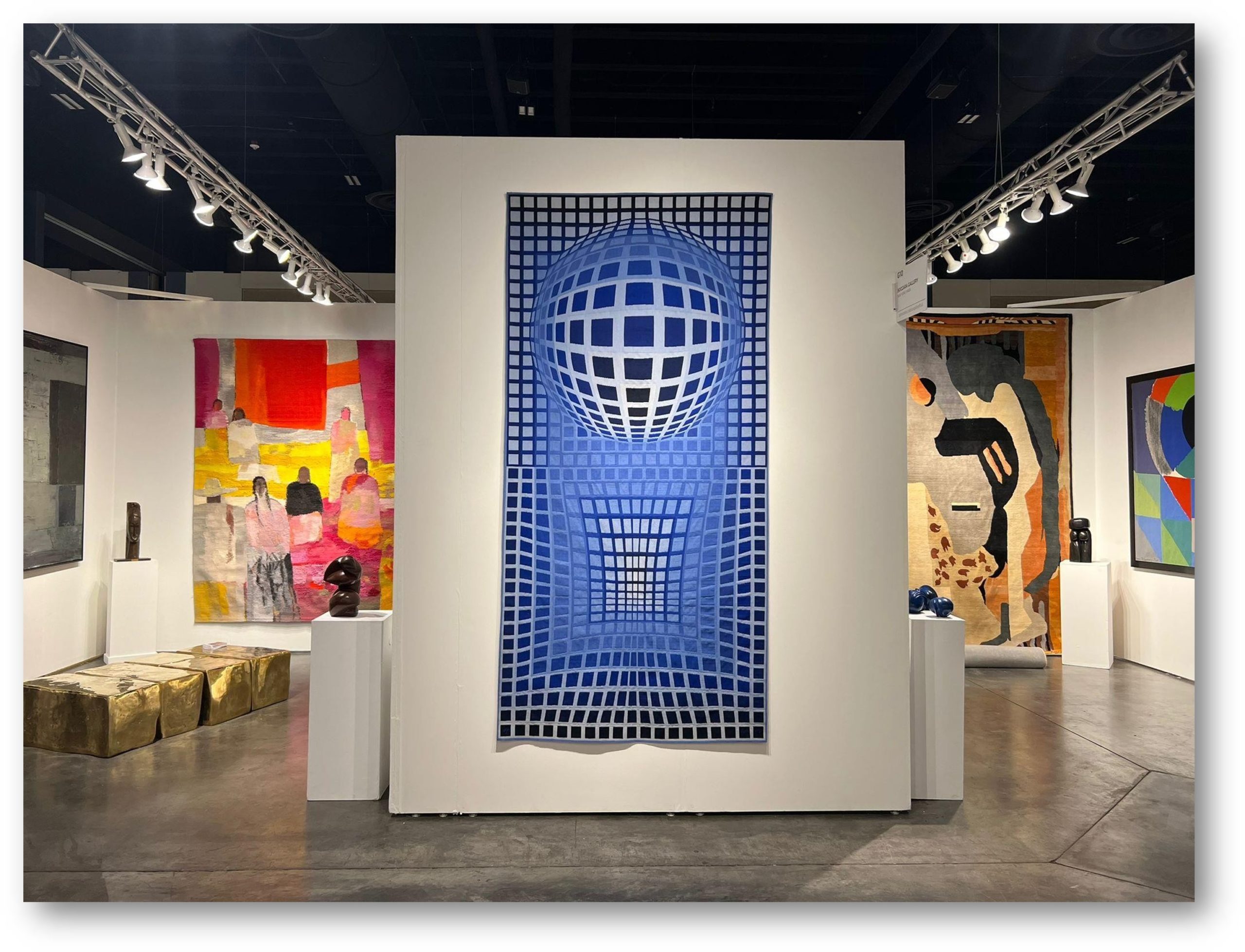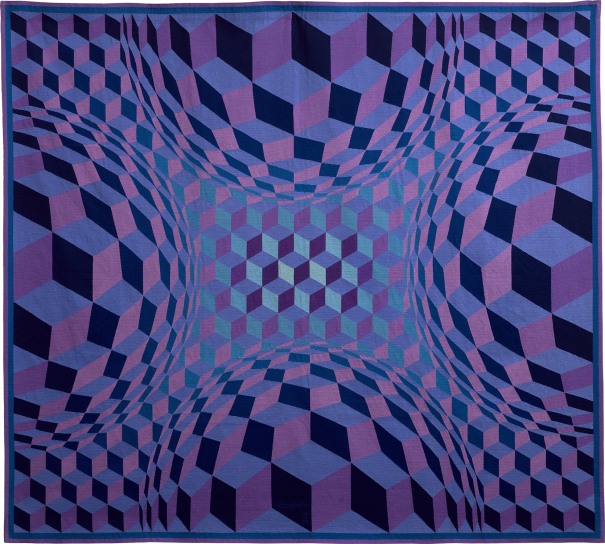VICTOR VASARELY
Victor Vasarely was a Hungarian-born artist who became one of the most influential figures in the Op Art movement that emerged in the 1960s. Vasarely’s distinctive style combined abstract geometric shapes with bright, contrasting colors to create optical illusions.
One of Vasarely’s most significant contributions to the art world was his use of technology to reproduce his works in series. This approach made his art widely accessible and led to the production of many tapestries based on his work.
Vasarely’s tapestries are remarkable for their precision and detail. The complex geometric patterns of his paintings are reproduced with great accuracy on the tapestries, creating an impression of depth and movement that is particularly effective when viewed up close.
Vasarely’s tapestries were produced in many different sizes, from small pieces for decorative use to monumental works intended to be hung in public spaces. Many of Vasarely’s tapestries are still on display in museums and galleries around the world, testifying to the importance of his work in the history of modern art.
In addition to their aesthetic appeal, Vasarely’s tapestries also reflect his interest in exploring the relationship between art and technology. He saw tapestries as a way to create functional art that could be used in everyday life, rather than being restricted to galleries and museums.
Overall, Vasarely’s tapestries represent a significant achievement in the history of modern art, and their enduring popularity speaks to the artist’s enduring influence on the art world
THE VICTOR VASARELY FOUNDATION

The Victor Vasarely Foundation is a non-profit organization that was established in 1976 by the famous Hungarian-French artist Victor Vasarely (1906-1997). The Foundation is dedicated to preserving and promoting the legacy of Vasarely and advancing the field of Op Art, a movement that he helped pioneer.
Victor Vasarely is widely regarded as one of the most influential artists of the 20th century. He is best known for his innovative use of geometric forms and optical illusions to create dynamic and visually engaging artworks. Vasarely’s art was characterized by a strong sense of order, symmetry, and precision, and he often used bold colors and intricate patterns to create mesmerizing effects that challenged the viewer’s perception.
The Victor Vasarely Foundation is located in Aix-en-Provence, France, and houses an extensive collection of Vasarely’s works, as well as archives, photographs, and documents related to his life and career. The Foundation’s mission is to promote the study and appreciation of Vasarely’s art, as well as to inspire new generations of artists and scholars to explore the possibilities of Op Art.
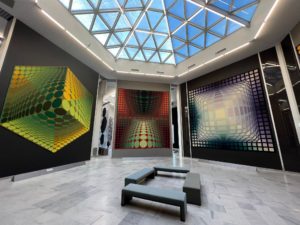
The Foundation organizes exhibitions, conferences, and educational programs that showcase Vasarely’s art and explore the principles of Op Art. It also provides research and support services for scholars and curators working on Vasarely-related projects.
In addition to its scholarly and educational activities, the Victor Vasarely Foundation is also involved in promoting the cultural and artistic heritage of Aix-en-Provence and the region of Provence. The Foundation regularly collaborates with local cultural institutions and sponsors events and initiatives that celebrate the artistic and intellectual richness of the region.
In conclusion, the Victor Vasarely Foundation is an essential institution for anyone interested in the art and legacy of Victor Vasarely and the movement of Op Art. Through its exhibitions, programs, and research initiatives, the Foundation provides a valuable resource for scholars, artists, and art lovers who seek to deepen their understanding of Vasarely’s innovative and groundbreaking work.
